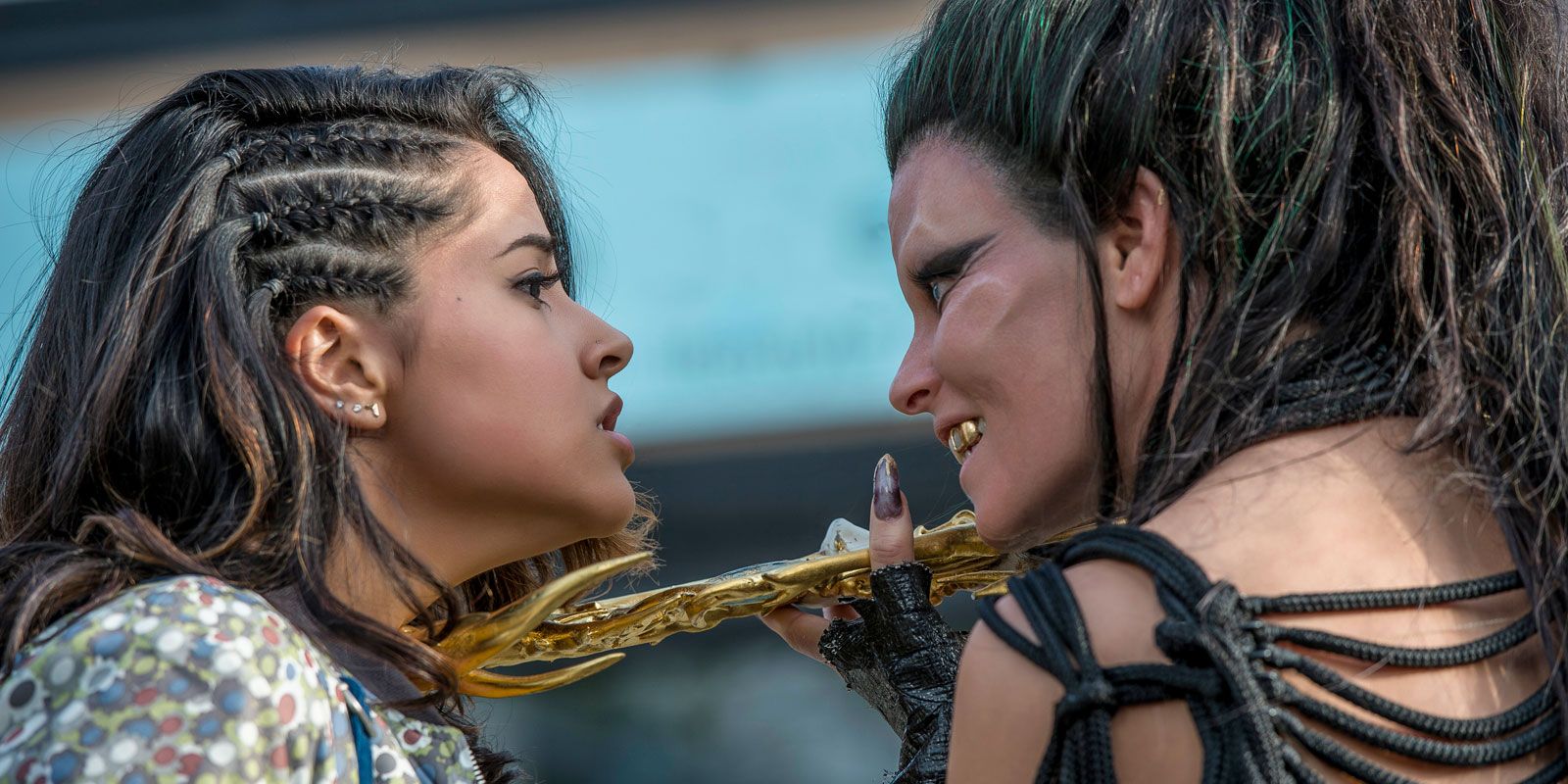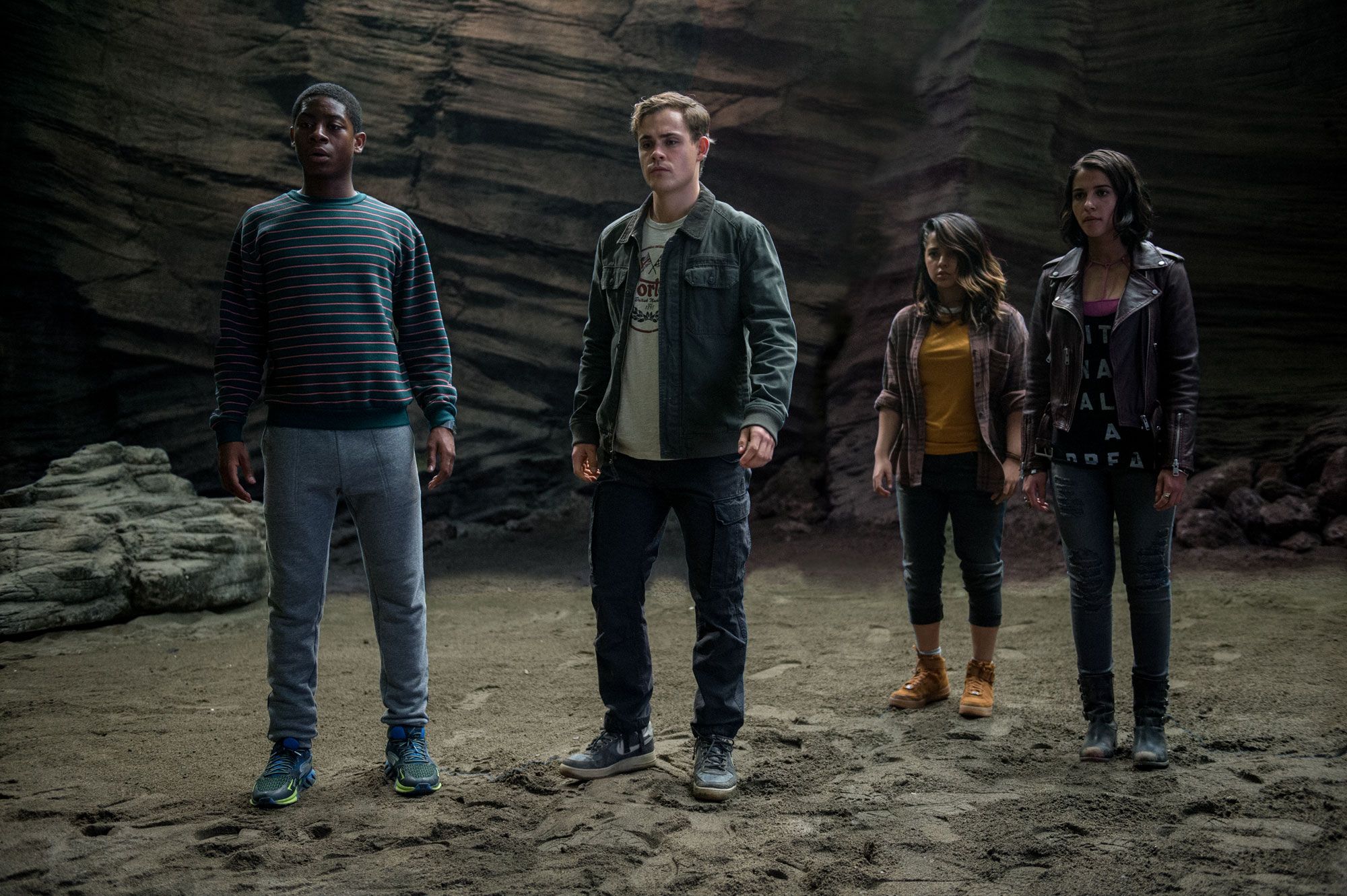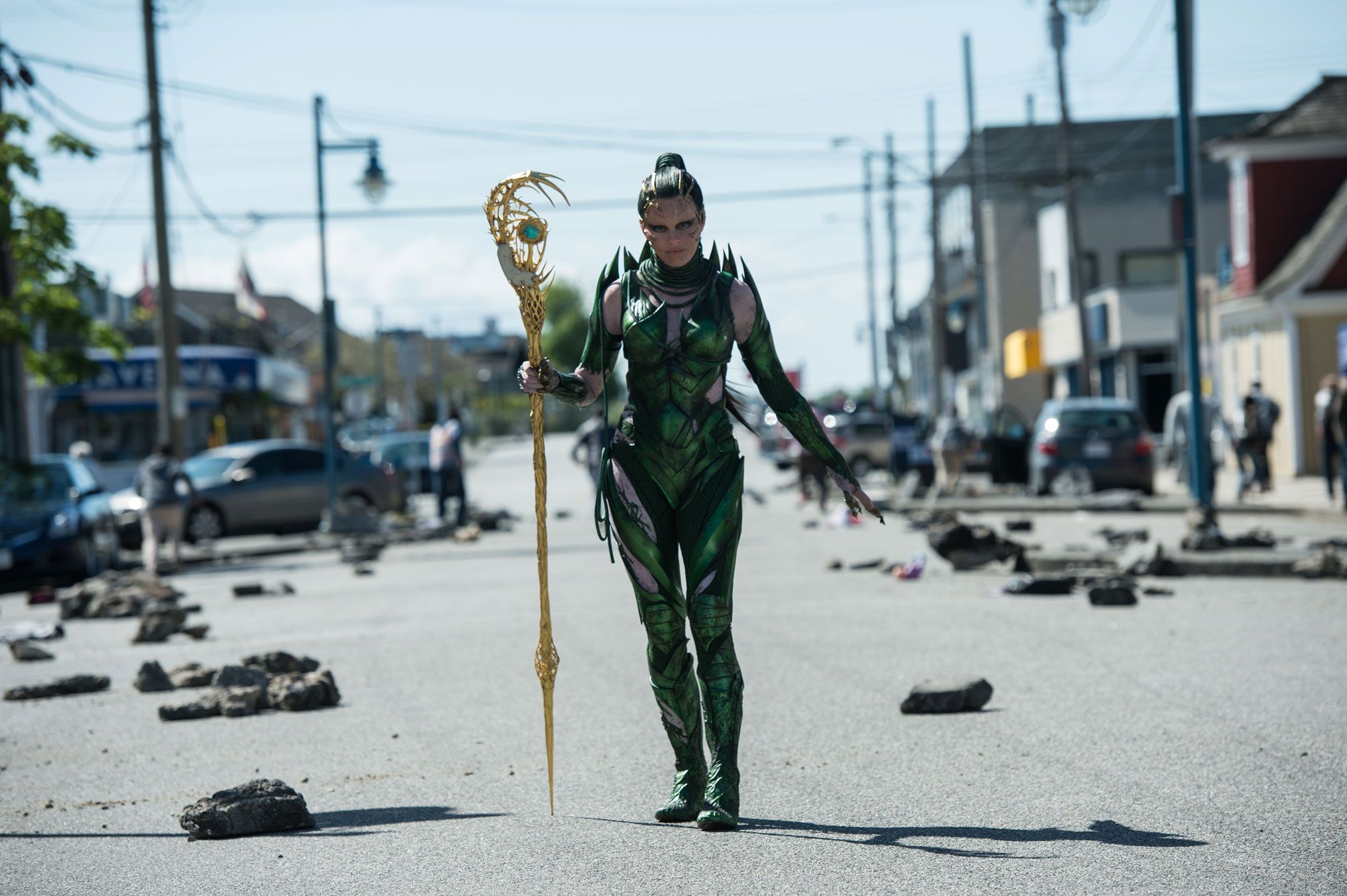It’s morphin time for Power Rangers" director Dean Israelite, and the amazing transformation at hand is even more challenging than shifting into superheroes or Megazords: it's taking a nostalgia-heavy property beloved by millions in their youths -- including himself -- and turning it into something familiar but fresh and franchise viable, for fans old and new.
After receiving acclaim for his fantastical but grounded first feature, 2014’s found footage film "Project Almanac," the South African-born filmmaker was tapped by Lionsgate for a rebooted version of the "Power Rangers" property, which has generated more than $6 billion in revenue since its debut in 1993.
RELATED: Hi-Res Power Rangers Pics Feature Red, Blue & Rita Repulsa
In a thoughtful and detailed conversation with CBR, Israelite revealed how he approached reinventing the franchise with both reverence and an eye for relevance in a post-Marvel entertainment landscape -- and just how daunting the task appeared at times.
CBR: I imagine that the trickiest part was tone: How to come at it to satisfy people who were 12 when they watched it, and people who are 12 today. How did you settle on exactly the way you wanted to present this material?
Dean Israelite: It’s a good question because tone, I think, is always, if not the hardest, one of the hardest things, I think in any movie, really. And this is a tricky tone. I wanted it to be fun and buoyant, at the same time, emotional. There are larger-than-life qualities to the odyssey that these kids go on, but more than anything, all of those different things had to remain completely grounded and real.
The way I approach it is similar to what I did with “Project Almanac,” where I just try and put myself in the position that the characters would be in at any given moment, and I don’t put a value judgment on what they’re interacting with. If they’re interacting with a robot, I don’t put a value on that being fake or out of the realm of possibility. I believe that that could be happening.
Once I take that leap, I figure out then, "What will that experience feel and look like?" So I think once you find a grounded way into all of these elements, you can kind of balance all of these desperate ideas. I think movies in the '80s did it really well. They were larger-than-life experiences that felt completely believable in the universe they created, and they were at times funny, at times really emotional, at times scary. So I try to balance all of those things.
Where did “Power Rangers” first come into your life before this job?
When I was a kid. Yeah, when I was a kid in South Africa, it came out when I was about 11 or 12. So I was the perfect age for it, and I grew up on that and “Ninja Turtles.” They both kind of defined my childhood.
Based on your memories and your gut feelings about your childhood version of seeing that, what did you want to keep intact from that as you made this movie?
I wanted to keep the warmth and the heart that I thought defined the series, the brand. That there was like a strength you got from watching it. There was something warm. There was something heartfelt about it, and there was a humor to it. There was a joy.
So I wanted to keep that buoyant quality. I thought that was always really important. I think that was also interesting in a landscape of superhero movies that tend to go pretty dark pretty quickly. I thought this could kind of counter that, in a good way.
As you were getting ready to start shooting, were you hearing things from the fan community? Because obviously there’s a diehard, dedicated fanbase for this. Were you hearing things that you also wanted to keep in mind? Like “OK, I get that this particular thing is really important to them.”
We worked closely with Saban -- with Haim Saban, and with everyone at Saban; Brian Casentini, who is a producer on the movie, and he’s very in touch with the brand as a whole, the feelings of the fans, where the fans are at now. They're still making the TV show, so he would filter everything to us in terms of when we were pushing things maybe a little too far in terms of taking too many leaps with the mythology, how we could rein that in, but use that as creative limitations, and the things that we were coming up with that he felt would really satisfy them. So he really had his finger on the pulse of that, and would help shepherd us if we were missing something, or playing outside the bounds of what we should be.
But as sort of a fan growing up, I felt like I had a pretty good true north about it too. Because I came at it from, I was a fan, I grew out of the show. What are the things that would remind me? What are the things that would bring me back? There are some very subtle things that, as a lapsed fan, it might go over my head. Then there are things that, as a lapsed fan, I would have forgotten, but once I see it, it totally takes me back there. Like, “I haven’t thought of that in 20 years, but man, that gave me a good feeling.”
What I thought was really fun about seeing this cast was how they came together as a team, much like their characters do. By the end of the movie, they’re all just firing on all cylinders together. Tell me about finding this group of young actors, and watching them become a cohesive unit together on set.
It’s a good question, because what I learned on “Project Almanac,” when I was watching the movie happen as we were making it, and then watching the final product, I felt like there was a joy on screen that came from just the joy that we had making that movie, and that those kids had together, and they became friends, and everyone who made the movie sort of formed this bond. There’s something that is intangible that then goes on to the screen, so I wanted to try and recreate that with this, because I thought there was a similar vibe that we needed to conjure.
We looked at probably, truly, thousands of people from all around the world. And it took us a really long time to find the right types of people for these roles that were able to do a few things: one, were right for the role; two, had chemistry together; three, embodied the spirit of the original characters. So that was a hard combination to really find.
Once we did find that, I made sure we had two weeks of rehearsal. I brought them to Vancouver. I had one-on-one rehearsals with them. I had group rehearsals with them. It was all about just a bond and a connection. What I was hoping is that the connection would spill over outside of rehearsal, and it did. The friendship you see when you’re interacting with them in genuine, and I think it’s had a real impact on the final product of the movie.
Did you, in most cases, even though looking at hundreds, maybe thousands, of people, did you just know? Did you feel like you knew when you saw each of them?
Yes, I think you know. I think there were times where you almost know, and where you start to try to convince yourself about something. We were close on some other people. Who knows what that would have been? I think you can ultimately, when you see the right person, you realize I was talking myself into that other person. You do kind of feel it.
It’s really interesting: I’ve been noticing this trend of seeing filmmakers who make an impressive but smaller-scale movie being tapped to do these big franchise projects. What was it like for you to have that experience? Was it like, “I get to play with all the toys!”? Or was it intimidating? How did you find your way into this much larger-scale production?
The way I found my way into it was, the studio and producers liked “Project Almanac.” I was one of, I think, eight or ten directors who were given the very early version of the script. I felt like I could really make this movie, and I felt good about what I was going to bring to it. So I ended up putting a big presentation together to finally get the job.
That’s how I came to the project. Once I was on it, I think I wasn’t intimidated until I was really in pre-production. We were having these very big meetings with all heads of department, and going through storyboards that I had come up with. And just seeing the amount of detail and specificity I had to provide for each board in order for it to be realized properly -- because there are so many variables that go into so many of these sequences -- I think in one of those meetings, it dawned on me how much I needed to know to kind of keep up with the room, and to make the room feel safe that I was going to be able to execute these sequences.
And I didn’t expect that, honestly. Maybe that was pretty naive of me. The leap that I feel like I took from student films to “Project Almanac,” to me, while I was making the movie, I was expecting it to feel more overwhelming, and it didn’t. From “Project Almanac” to this, the learning curve was beyond exponential.
Getting Bryan Cranston -- what great, fun casting, given his history as a voice actor on the original. Tell me about those conversations. When he said yes, you must have been thrilled.
Yeah, it was amazing. We wanted to go out to someone, but we knew that it was going to be hard for them to wrap their minds around if they were just reading the script. And us saying, “You’re a face in a wall. Please come and do this movie.” So we decided we were going to finish shooting and be able to show footage.
So that’s what we did. We finished shooting. We put together a sizzle reel. Bryan watched the sizzle reel. He read the script. He came into the office. He watched some scenes. It gave him a much fuller understanding of what the movie was, and the tone of the movie, and where he would fit into it. And at that point too, we had very early concepts for what Zordon would look like.
I’ve got to say, after reading the script and watching the materials, he seemed to just get it. He understood what we were trying to do, and I think he was really pleased and surprised about the tone that we were going for, and he felt like the kids were really good. He just liked it, and he wanted to be a part of it.
It was so exciting because he’s, like, perfect for the role. There’s a power to him, but there’s an emotion to him, and he humanizes everything. I remember he came into editorial. We started going through a bunch of the scenes, and he started talking to me about Zordon and what he wanted to bring to Zordon. It was just sort of like one of those moments where you realize, “Wow, I’m in the presence of someone that I admire, and who’s kind of like a hero of mine, and here he is talking about what he wants to do in the movie that I’m making,” and was very humbling and really exciting.
One of the things I found really interesting was Elizabeth Banks’ performance as Rita Repulsa, which it’s got a humorous bite to it, but it’s not campy and it’s not over the top. Because of the show’s precedent, you could have leaned into the camp side. And she’s such a great comedian. How did you guys land on exactly that interpretation? I think it’s just in the right path.
Good -- I’m glad to hear you say that! It was scary for both of us, because we both knew, looking at the show, and when I remember Rita, you do just remember this kind of outlandish character. But when you’re a kid, there’s something wonderful about that. So I think it would have been a real shame to not infuse that into the character.
I think it’s pretty risky, but really exciting to say, “OK, we’re going to do a villain that feels like a Tim Burton villain of yesteryear, that is able to kind of tow the line between something that is terrifying and eerie, and at the same time hilarious and absurd.” And that’s going to open us up to potentially a lot of criticism because people might not like the silliness of it, but that’s what I think what can make it unique.
We just talked a lot about that, and a lot about how absurd she would be, and what justified it. Why was she like that? And really trying to find a grounded place that that all came from, and that sort of became our true north. Once we had that, on set, it was just kind of playing and pushing. I would keep kind of trying to get her to do more and do more, and then in editorial, she had given us so much stuff. I could cut a Rita movie!
She gave us so much stuff that then it was about like, “How far do we go?” There were definitely cuts of the movie where we went too far. Then there were cuts of the movie where we played it way too safe, and we finally kind of found the right balance.
How committed to more “Power Rangers” in your future are you? Do you want to stick with it, and if there’s a sequel, do it right away? Do you want to take a breath and do something else first? What’s your “in a perfect world” plan right now?
It’s a hard question. I love what we created, and I love the universe. The universe is so big, and you know that we’re teeing up something else in this movie. I really want to be part of seeing what else is in this universe.
In terms of the specific timing, I just learned in my short time in this business, you just don’t know in terms of the timing. There might be something that I could fit in really quick, and then still be able to do the sequel. Or maybe it will be I’ll have to choose, but they’re all good problems to have.
The short answer to your question is, I’m very passionate about what we made, and to me, it’s about how many years do you want to spend with the characters? And to me, there’s so much more to explore that I’m in.
Anything you didn’t get in that you wanted to get into the movie really badly?
Into the movie? Not really. I’m surprised how much we fit in. By the way, the assembly of this movie, it was three and a half hours. My cut of the movie before we start to hone, it’s called the director’s cut, but doesn’t mean it’s my preferred cut, was two hours and 30 minutes. There’s a lot of movie that isn’t on the screen. But I think the best parts are on the screen.
"Power Rangers" opens tonight in theaters.




